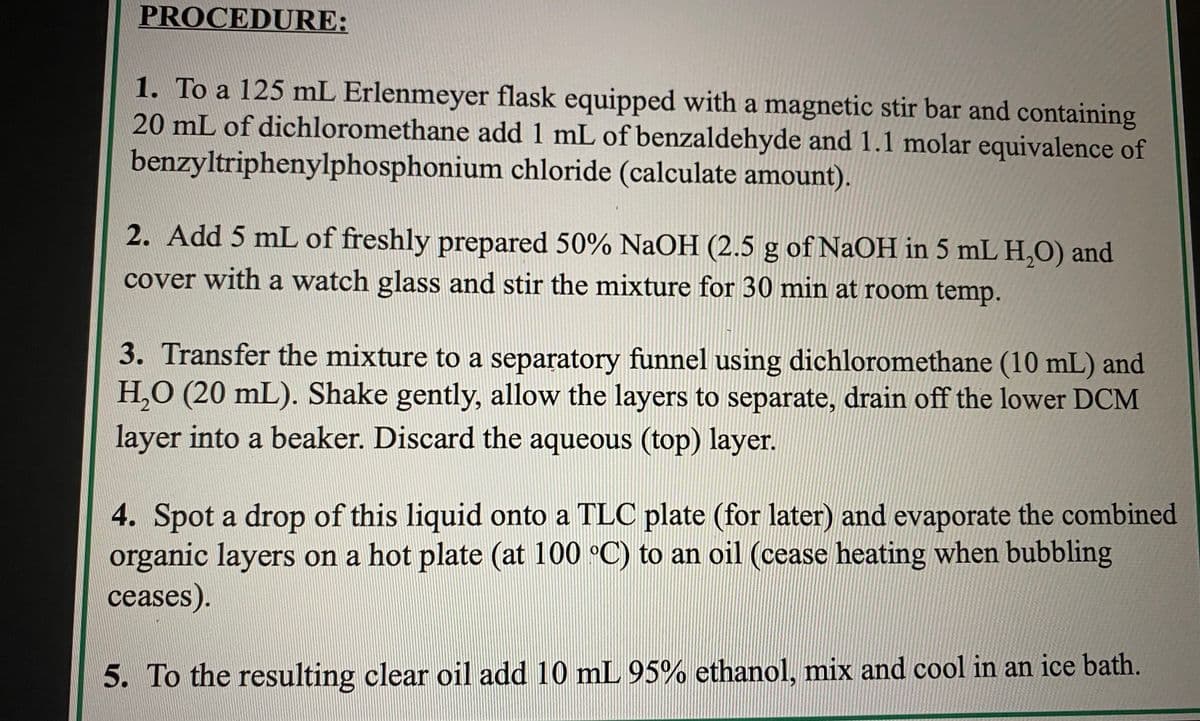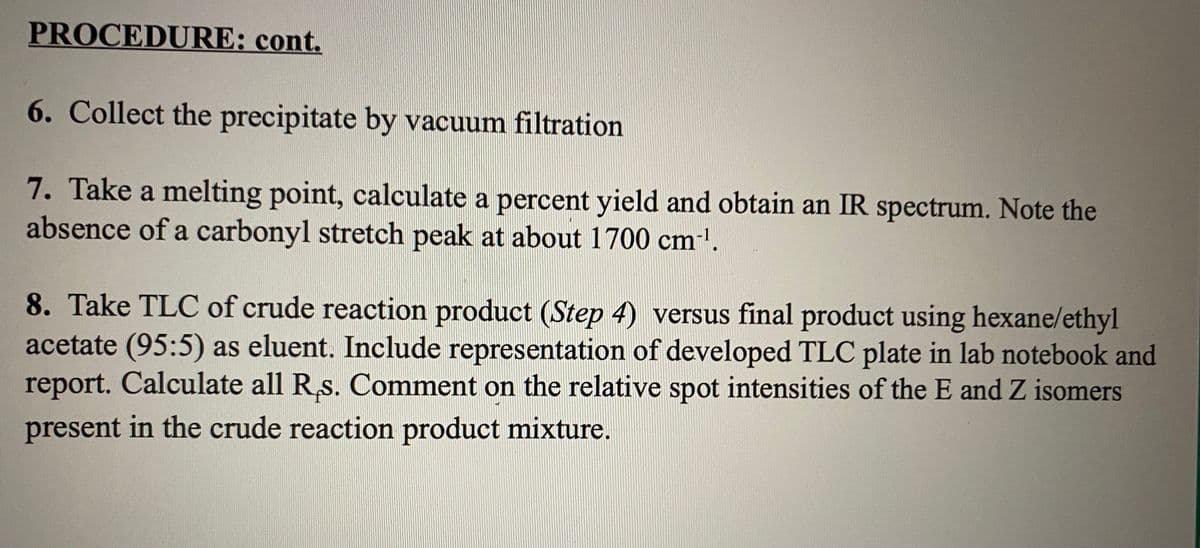Melting point: 122-123 experimental product melting point: 120 mass of starting material: 1.04 mass of product: 0.85g what is limiting reagent and percent yield?
Melting point: 122-123 experimental product melting point: 120 mass of starting material: 1.04 mass of product: 0.85g what is limiting reagent and percent yield?
Macroscale and Microscale Organic Experiments
7th Edition
ISBN:9781305577190
Author:Kenneth L. Williamson, Katherine M. Masters
Publisher:Kenneth L. Williamson, Katherine M. Masters
Chapter8: Thin-layer Chromatography: Analyzing Analgesics And Isolating Lycopene From Tomato Paste
Section: Chapter Questions
Problem 10Q: A TLC plate showed two spots with Rf values of 0.25 and 0.26. The plate was removed from the...
Related questions
Question
100%
Melting point: 122-123
experimental product melting point: 120
mass of starting material: 1.04
mass of product: 0.85g
what is limiting reagent and percent yield?

Transcribed Image Text:PROCEDURE:
1. To a 125 mL Erlenmeyer flask equipped with a magnetic stir bar and containing
20 mL of dichloromethane add 1 mL of benzaldehyde and 1.1 molar equivalence of
benzyltriphenylphosphonium chloride (calculate amount).
2. Add 5 mL of freshly prepared 50% NaOH (2.5 g of NaOH in 5 mL H,0) and
cover with a watch glass and stir the mixture for 30 min at room temp.
3. Transfer the mixture to a separatory funnel using dichloromethane (10 mL) and
H,O (20 mL). Shake gently, allow the layers to separate, drain off the lower DCM
layer into a beaker. Discard the aqueous (top) layer.
4. Spot a drop of this liquid onto a TLC plate (for later) and evaporate the combined
organic layers on a hot plate (at 100 °C) to an oil (cease heating when bubbling
ceases).
5. To the resulting clear oil add 10 mL 95% ethanol, mix and cool in an ice bath.

Transcribed Image Text:PROCEDURE: cont.
6. Collect the precipitate by vacuum filtration
7. Take a melting point, calculate a percent yield and obtain an IR spectrum. Note the
absence of a carbonyl stretch peak at about 1700 cm'.
8. Take TLC of crude reaction product (Step 4) versus final product using hexane/ethyl
acetate (95:5) as eluent. Include representation of developed TLC plate in lab notebook and
report. Calculate all R,s. Comment on the relative spot intensities of the E and Z isomers
present in the crude reaction product mixture.
Expert Solution
This question has been solved!
Explore an expertly crafted, step-by-step solution for a thorough understanding of key concepts.
Step by step
Solved in 3 steps

Knowledge Booster
Learn more about
Need a deep-dive on the concept behind this application? Look no further. Learn more about this topic, chemistry and related others by exploring similar questions and additional content below.Recommended textbooks for you

Macroscale and Microscale Organic Experiments
Chemistry
ISBN:
9781305577190
Author:
Kenneth L. Williamson, Katherine M. Masters
Publisher:
Brooks Cole

Macroscale and Microscale Organic Experiments
Chemistry
ISBN:
9781305577190
Author:
Kenneth L. Williamson, Katherine M. Masters
Publisher:
Brooks Cole